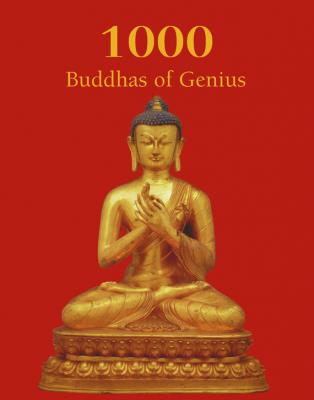1000 Buddhas of Genius. Victoria Charles
Читать онлайн.| Название | 1000 Buddhas of Genius |
|---|---|
| Автор произведения | Victoria Charles |
| Жанр | Энциклопедии |
| Серия | The Book |
| Издательство | Энциклопедии |
| Год выпуска | 0 |
| isbn | 978-1-78310-957-9, 978-1-78310-463-5 |
Your second is called Discontent.
Your third is Hunger and Thirst.
Your fourth is called Craving.
Fifth is Sloth and Torpor.
Sixth is called Terror.
Your seventh is Uncertainty.
Hypocrisy and Stubbornness, your eighth.
Gains, Offerings, Fame, and Status
wrongly gained,
and whoever would praise self
and disparage others.
That, Namuci, is your army,
the Dark One’s commando force.
A coward can’t defeat it,
but one having defeated it
gains bliss.
Do I carry munja grass?
I spit on my life.
Death in battle would be better for me
than that I, defeated,
survive.
Sinking here, they don’t appear,
some priests and contemplatives.
They don’t know the path
by which those with good practises
go.
Seeing the bannered force
on all sides –
the troops, Mara
along with his mount –
I go into battle.
May they not budge me
from
my spot.
That army of yours,
that the world with its devas
can’t overcome,
I will smash with discernment –
as an unfired pot with a stone.
Making my resolve mastered,
mindfulness well-established,
I will go about, from kingdom to kingdom,
training many disciples.
They – heedful, resolute
doing my bidding –
despite your wishes, will go
where, having gone,
there’s no grief.”
… As [Mara] was overcome with sorrow,
his lute fell from under his arm.
Then he, the despondent spirit,
right there
disappeared.
[Snp III.2]
Rajagriha, the capital of Magadha, was the seat of Bimbisara, who was then one of the most powerful princes in the eastern valley of the Ganges. The city was situated in a pleasant valley, closely surrounded by five hills, in the most northerly offshoot of the Vindhya Mountains. In the caves on these hillsides, several hermits had found it convenient to settle. There they were free from the dangers of more disturbed districts and near enough to the town where they procured their simple supplies, while remaining surrounded by the solitude of nature. Gautama first attached himself to one of these Brahman teachers, named Alara; however, he became dissatisfied with Alara’s system and turned to another teacher named Udraka, learning under them all that Hindu philosophy had then to teach about this world or the next.
22. Buddha painting with gold leaf, date unknown, Wat Chakrawat, Bangkok, Thailand, gold leaf.
23. Seated Buddha, date unknown, Sagaing, Burma.
24. Buddha from the Eight Temples outside Gubei Pass in Chengde, Hebei province, date unknown, Chengde, China.
Passers-by take notice of his serene radiance and mindfulness (Pali Canon):
On going forth,
he avoided evil deeds in body.
Abandoning verbal misconduct,
he purified his livelihood.
Then he, the Buddha, went to Rajagriha,
the mountain fortress of the Magadhans,
and wandered for alms,
endowed with all the foremost marks.
King Bimbisara, standing in his palace, saw him,
and on seeing him, consummate in marks,
said: “Look at this one, sirs.
How handsome, stately, pure!
How consummate his demeanour!
Mindful, his eyes downcast,
looking only a plow-length before him,
as one who’s not from a lowly lineage:
Send the royal messengers at once
to see where this monk will go.”
They – the messengers dispatched –
followed behind him.
“Where will this monk go?
Where will his dwelling place be?”
As he went from house to house –
well-restrained, his sense-doors guarded,
mindful, alert –
his bowl filled quickly.
Then he, the sage, completing his alms round,
left the city, headed for Mount Pandava.
“That’s where his dwelling will be.”
Seeing him go to his dwelling place,
three messengers sat down,
while one returned to tell the king.
“That monk, your majesty,
on the flank of Pandava,
sits like a tiger, a bull,
a lion in a mountain cleft.”
[Snp III.1]
25. Seated Buddha,
date unknown, Burma, gilt wood.
26. Buddha with flames arising from the head and shoulders, date unknown, Bangkok, Thailand, gold.
27. Torso and Head of Buddha, date unknown, Ngarhtatgyi Pagoda, Yangon, Burma.
28. Head of a Buddha statue, date unknown, Swayambhunath Temple, Kathmandu, Nepal.
A king wonders, “Why have you gone forth?”:
Hearing the messenger’s words,
the noble warrior king
straight away went by royal coach,
out to Mount Pandava.
Going as far as the coach would go,
he got down, went up on foot,
and on arrival sat down.
Sitting there,
he exchanged courteous greetings,
then said:
“You are young,
